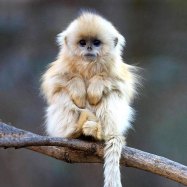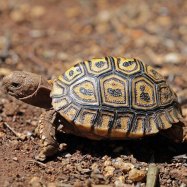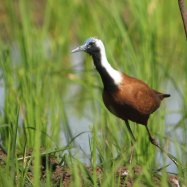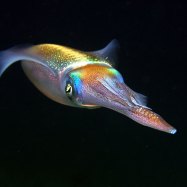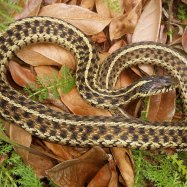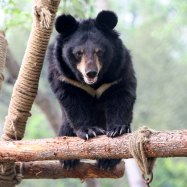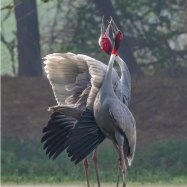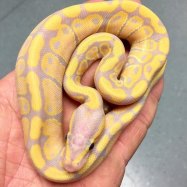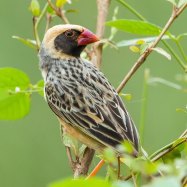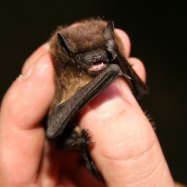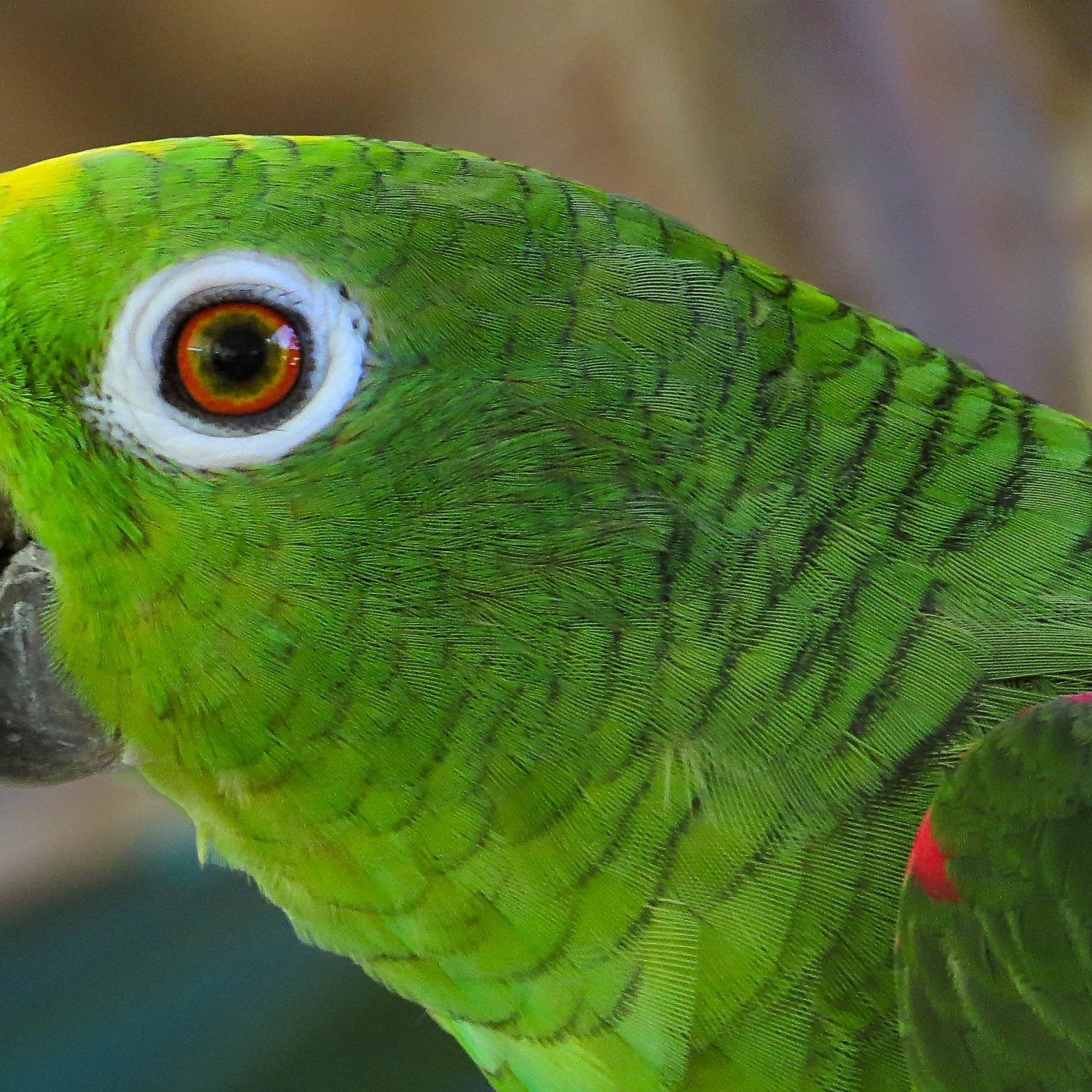
Amazon Parrot
30-40 cm (11-16 inches)
The Amazon Parrot, found in the tropical rainforests of South America, is a medium-sized bird with a stocky build. These colorful creatures, part of the Psittacidae family, can grow up to 11-16 inches in length. With their intelligent nature and playful personalities, they make popular pets for bird lovers. #AmazonParrot #TropicalBirds #RainforestAnimals
Animal Details Summary:
Common Name: Amazon Parrot
Kingdom: Animalia
Habitat: Tropical rainforests
The Fascinating World of Amazon Parrots
The Amazon parrot, scientific name Amazona, is a well-known and beloved bird found in the tropical rainforests of Central and South America. With its vibrant colors, expressive nature, and intelligence, it has become a popular pet and a symbol of the diverse wildlife found in this region. In this article, we will delve into the intriguing world of Amazon parrots, exploring their unique characteristics, behaviors, and habitats.The Kingdom of Amazon Parrots
The Amazon parrot belongs to the Animalia kingdom, which includes all animals on Earth Amazon Parrot. As a member of the chordata phylum, it shares characteristics such as a hollow dorsal nerve cord and a segmented body with other animals such as humans and fish. Its class, Aves, distinguishes it as a bird, while its order, Psittaciformes, groups it with other parrots and their relatives.A Family of Colorful Birds
Amazon parrots are members of the Psittacidae family, which includes over 300 species of parrots. They are known for their bright and eye-catching plumage, ranging from various shades of green to touches of red, yellow, and blue on their head and wings. This colorful display serves a purpose beyond aesthetics – it helps them blend in with their surroundings, making them less visible to predators.A Habitat Like No Other
Tropical rainforests are the natural habitat of the Amazon parrot, and they play a vital role in the ecosystem. These lush, verdant forests are rich in biodiversity, housing countless plant and animal species, and provide the perfect environment for the parrots to thrive. The dense vegetation provides ample shelter and protection, while the abundance of fruits, nuts, seeds, and flowers serve as their primary food source.A Herbivorous Diet
The Amazon parrot is a herbivore, meaning it only eats plants and their by-products American Cockroach. In the wild, their diet mainly consists of fruits, berries, nuts, and seeds found in the rainforest. However, when in captivity, they can also be fed a well-balanced diet of vegetables, grains, and specially formulated parrot pellets. Owners should also provide them with fresh water and access to a mineral block for optimal health.Central and South American Origins
The Amazon parrot is found across various countries in Central and South America, including Brazil, Peru, Colombia, and Ecuador. It is believed that the different species of Amazon parrots originated from a single ancestral species in the region, adapting to their specific environments and evolving into different sub-species. This diversity is part of what makes these birds so fascinating.Exploring the Rainforest
Within the tropical rainforests, Amazon parrots can be found in the upper layers of the forest, where they forage for food and build their nests. They are social creatures, and many species form large flocks, especially during feeding and breeding times. These flocks can consist of hundreds of birds, creating a beautiful spectacle of colors and sounds as they move through the trees.Physical Characteristics of Amazon Parrots
With their stocky build, medium size, and vibrant colors, Amazon parrots are easily distinguishable from other bird species. They typically measure between 30-40 cm (11-16 inches) in length and have an average wingspan of 50-60 cm (20-24 inches). Their strong beaks are designed for cracking open hard shells to get to the seeds and nuts inside, and their feet have two toes facing forward and two facing backward, which helps them grip onto tree branches.A Highly Intelligent Species
One of the most striking features of the Amazon parrot is its high level of intelligence. They have the ability to problem-solve, learn and mimic words and actions, and even use tools to obtain food. This intelligence is also reflected in their social behavior, as they form strong bonds with their flock members and have a complex system of communication, using both visual cues and vocalizations.The Joys of Owning an Amazon Parrot
Although owning a parrot may seem like an exciting and unique experience, it is not a suitable pet for everyone. Amazon parrots require a lot of time, attention, and care, and their lifespan of 50-60 years means they are a long-term commitment. As highly social birds, they can become distressed when left alone for extended periods or when not given enough mental stimulation. However, for those willing to put in the effort, owning an Amazon parrot can be a rewarding and fulfilling experience.In Conclusion
The Amazon parrot, with its vibrant colors, intelligence, and natural habitat in the tropical rainforests, is a unique and fascinating bird species. Its role in the ecosystem and its special bond with its flock members make it a beloved and essential member of the animal kingdom. Whether seen in the wild or kept as a pet, the Amazon parrot continues to captivate and inspire awe in all who encounter it.

Amazon Parrot
Animal Details Amazon Parrot - Scientific Name: Amazona
- Category: Animals A
- Scientific Name: Amazona
- Common Name: Amazon Parrot
- Kingdom: Animalia
- Phylum: Chordata
- Class: Aves
- Order: Psittaciformes
- Family: Psittacidae
- Habitat: Tropical rainforests
- Feeding Method: Herbivorous
- Geographical Distribution: Central and South America
- Country of Origin: Various countries in Central and South America
- Location: Tropical rainforests
- Animal Coloration: Green, with various colors on the head and wings
- Body Shape: Medium-sized with a stocky build
- Length: 30-40 cm (11-16 inches)
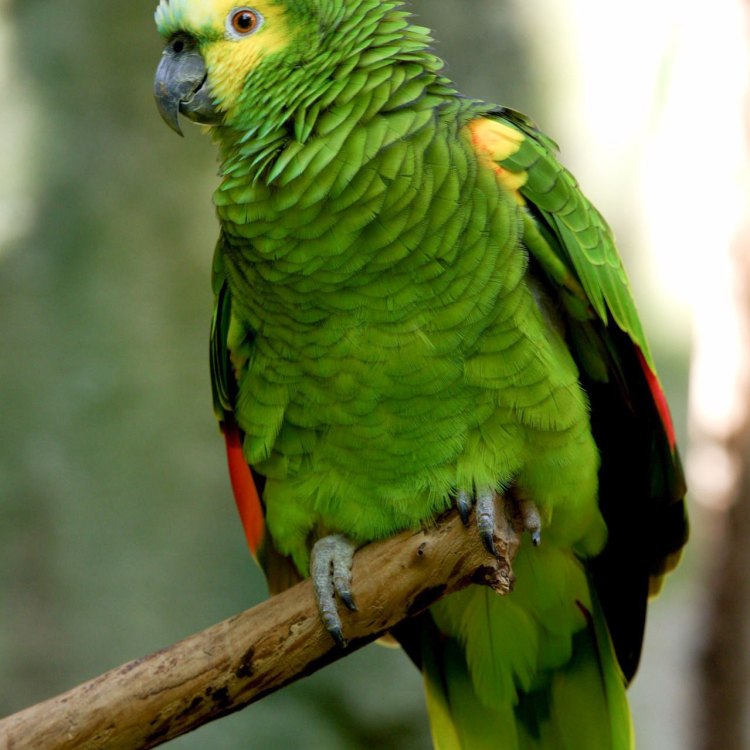
Amazon Parrot
- Adult Size: Medium-sized
- Average Lifespan: 50-70 years
- Reproduction: Sexual
- Reproductive Behavior: Monogamous
- Sound or Call: Loud squawking sounds
- Migration Pattern: Non-migratory
- Social Groups: Highly social, living in flocks
- Behavior: Intelligent, curious, and social
- Threats: Habitat loss, illegal trapping for pet trade
- Conservation Status: Varies depending on species
- Impact on Ecosystem: Seed dispersers
- Human Use: Popular as pets
- Distinctive Features: Brightly colored plumage, strong hooked beak
- Interesting Facts: Can mimic human speech, some species have been observed using tools
- Predator: Birds of prey, snakes, mammals
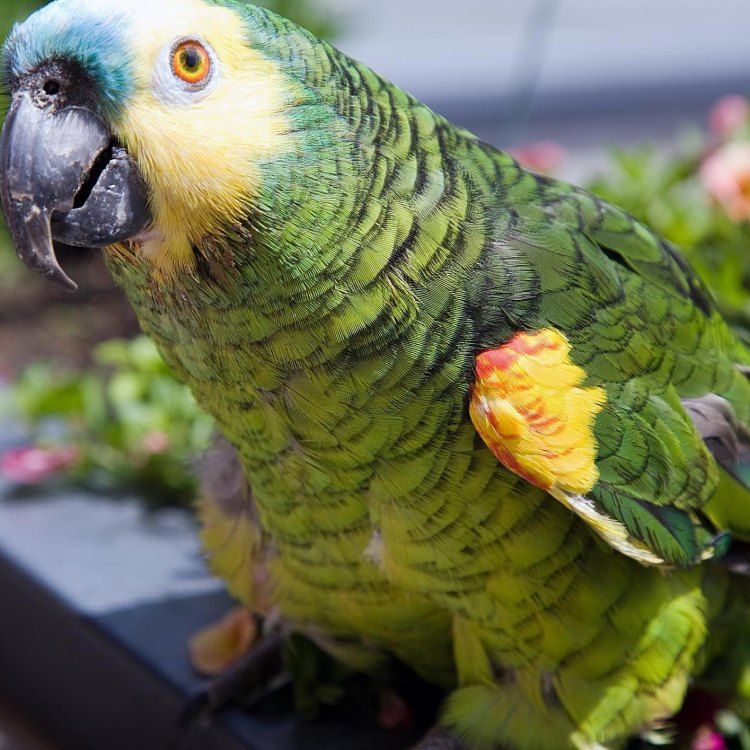
Amazona
The Fascinating World of Amazon Parrots: Intelligent and Colorful Creatures
The Amazon parrot, also known as the Amazona parrot, is a medium-sized parrot species that belongs to the Psittacidae family. These birds are native to the New World, primarily found in South America, Central America, and the Caribbean. They have become one of the most popular bird species in the world, renowned for their colorful plumage, intelligence, and entertaining behavior. Let's explore the unique features and behaviors of the Amazon parrot which make them a beloved and fascinating creature PeaceOfAnimals.Com.An Impressive Adult Size and Lifespan
Amazon parrots are medium-sized birds, ranging from 12 to 18 inches in length. Their average weight is between 8.4 to 35.2 ounces, depending on the species. While they may not be as large as other parrot species, their size does not detract from their impressive lifespan. These birds have been known to live for 50 to 70 years in captivity, with some even going beyond 80 years. This longevity is similar to the lifespan of a human, making them ideal pets for those seeking long-term companionship.Reproduction and Monogamous Behavior
Amazon parrots have a sexual mode of reproduction, meaning they require a male and a female to mate and produce offspring. They are monogamous creatures, forming lifelong bonds with their chosen mate Arsinoitherium. Once a pair has established their relationship, they remain faithful to each other and engage in courtship rituals that include feeding each other and preening each other's feathers.Loud Squawking Sounds: A Signature Call of the Amazon Parrot
One of the most striking features of the Amazon parrot is their loud squawking sound. These birds have a powerful voice and use it to communicate with their flock members, especially if they are separated from one another. Their calls can be heard from a considerable distance and are often considered to be a signature sound of the Amazon rainforest. However, owners of these birds may need to invest in some earplugs, as their loud calls can be disruptive in a home setting.Non-Migratory Birds with Strong Social Bonds
Unlike some bird species, the Amazon parrot is a non-migratory bird, meaning they do not undertake seasonal journeys for food or breeding purposes. They are highly social creatures and live in flocks of up to 30 birds, preferring to be around their flockmates at all times. They have a strong sense of community and often rely on their flock to find food, build nests, and protect each other from predators.Intelligence, Curiosity, and Sociability: The Triple Threat
The Amazon parrot is widely considered to be one of the most intelligent bird species in the world. They have an incredible ability to mimic human speech and learn new sounds, making them popular pets for those seeking a talking companion. In the wild, these birds are also known for their problem-solving skills, using tools to access food sources or extract seeds from nuts. Additionally, their curious nature makes them constantly active and exploring their surroundings, which is why they require plenty of mental stimulation and interaction with their owners.Threats to Wild Populations and Conservation Status
Due to their striking beauty and high level of intelligence, the Amazon parrot has become a highly sought-after bird for the illegal pet trade. This demand, coupled with habitat destruction, has resulted in a decline in wild populations. Many species of Amazon parrots are now listed as threatened or endangered, highlighting the urgent need for conservation efforts and stricter laws to protect them.Role in the Ecosystem as Seed Dispersers
As with any creature in the ecosystem, the Amazon parrot plays a crucial role in maintaining the balance of its environment. These birds are seed dispersers, meaning they consume fruits and berries and spread the seeds to new locations through their droppings. This process allows for the growth and spread of new plants, contributing to the diversity and sustainability of the ecosystem.Human Use and Popular Pet Choice
Despite being a critical part of the ecosystem, the Amazon parrot is also a popular choice for a pet. Their unique features, intelligence, and ability to mimic speech make them highly sought after by bird lovers. However, it should be noted that these birds require a high level of care and attention, as well as a considerable investment of time and resources. Unfortunately, many owners may not be prepared for the long-term responsibility of caring for these creatures, resulting in many abandoned and neglected Amazon parrots.Brightly Colored Plumage and Strong Hooked Beaks: The Distinctive Features of the Amazon Parrot
The Amazon parrot is known for its exceptionally vibrant and colorful plumage, making them one of the most visually striking birds in the world. Their feathers come in a variety of colors, including shades of green, yellow, red, and blue, creating a mesmerizing rainbow effect. Along with their colorful feathers, these birds are also recognized for their strong, hooked beaks that they use to crack open nuts and seeds, as well as to climb and hold on to branches.Interesting Facts: Mimicking Human Speech and Tool Usage
As mentioned earlier, the Amazon parrot is known for its impressive ability to mimic human speech. They have been observed copying sounds, words, and even songs, with some birds developing an extensive vocabulary. However, that is not the only interesting fact about these birds. In recent years, studies have shown that some species of Amazon parrots have been observed using tools to gather food, making them one of the few bird species with this ability.Predators of the Amazon Parrot: A Battle for Survival
In the wild, the Amazon parrot faces a range of predators, including birds of prey, snakes, and mammals such as wild cats. To survive, these birds have developed a highly sophisticated warning system, with each flock member keeping a lookout for potential danger. They also use their loud calls to alert the flock and take flight as a group, making it harder for predators to single out an individual.Final Thoughts
The world of the Amazon parrot is one of beauty, intelligence, and mystery. Unfortunately, these birds face many threats and challenges, both in the wild and in captivity. As humans, it is our responsibility to ensure the conservation of these incredible creatures and their natural habitat. We must also educate ourselves on their specific needs, behaviors, and care requirements before deciding to make them our companions. With proper care and respect, the Amazon parrot can continue to enchant us with its colorful and intelligent presence for many years to come.
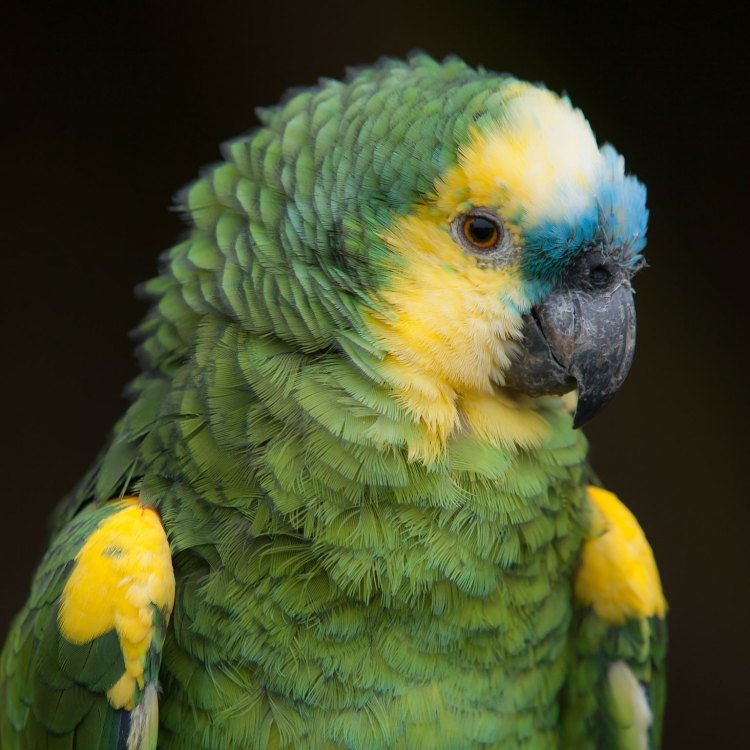
The Fascinating World of Amazon Parrots
Disclaimer: The content provided is for informational purposes only. We cannot guarantee the accuracy of the information on this page 100%. All information provided here may change without prior notice.

